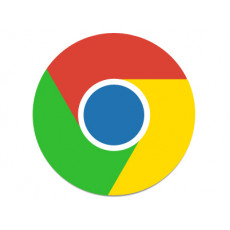

Google has become known as the "moon shot" company, but there are signs it's starting to come back to earth.
The search giant has become the talk of Silicon Valley for its costly projects, ranging from driverless cars, Wi-Fi-enabled balloons and radar-based chips. The goal: Find a new source of revenue and potentially change the world along the way.
Google isn't giving up on those efforts, but its approach to spending is beginning to change. The company has been slower to add to its headcount and has begun to scrutinize its projects more closely.
The trend will likely continue despite Google's strong financial performance in its second quarter. In the three-month period ended June 30, sales, excluding the cost Google pays to partners to drive traffic to its sites, were $14.35 billion. Profit, after adjustments for stock-based compensation and other items, was $6.99 a share. Analysts had estimated $14.27 billion in revenue and earnings of $6.70 per share.
"A key focus is on the levers within our control to manage the pace of expenses while still ensuring and supporting our growth," Ruth Porat, Google's new chief financial officer, said Thursday during her first conference call with investors.
The company's stock rose more than 11 percent in after-hours trading, as investors responded to strong gains in Google's mobile business.
It may seem odd to an outsider that a company so profitable would ever feel the need to tighten the purse strings. But Google is facing mounting competition, particularly in its lucrative search business. Companies like Amazon, Facebook, Apple and Yelp have begun building search technologies for smartphones and tablets, encouraging consumers to use individual apps -- and thus, not Google, for information. The result is that googling is no longer a reflex on a mobile device. That's been worrisome for investors.
Porat's predecessor, Patrick Pichette, was known for putting Google on a stricter financial diet -- a balancing act at a company built in the image of free-wheeling co-founders Larry Page and Sergey Brin. Earlier this year, the company "paused" development of Google Glass, the company's smart eyewear, and discontinued its early tester program. On a conference call with analysts in the previous quarter, Pichette cited those moves as an example of the company's willingness to pull back on costly projects.
Porat, who previously was CFO of Morgan Stanley, is expected to curb spending even more. In recent months, some Google employees had trouble getting hiring plans approved, according to a report by The Wall Street Journal. In the second quarter, the company added only 1,729 new employees, the smallest bump since 2013.
But even with the change in attitude, Google still isn't abandoning its moon shot approach. Last month, right before the company's annual meeting with shareholders, Brin filed an open letter with the Securities and Exchange Commission defending Google's sometimes costly investments in ambitious projects like driverless cars and smart contact lenses. He described those initiatives as "very challenging, and the outcomes are far from certain." Still, he underscored their importance to the company's future.
"I am humbled and excited to try."
Google's future: Mobile and YouTube
Google, though, insists it hasn't fallen too far behind with mobile devices. To tout its chops in that area, the company often calls out the growth of YouTube, which sees more than 1 billion visitors a month, and Google Play, where people can download apps, movies or music for devices running Google's Androidoperating system.
Porat said YouTube revenue saw "significant growth" in the quarter, though the company doesn't break out sales figures for the video service. The time people spent watching videos on the site grew 60 percent year over year, Porat said. On mobile devices specifically, she said the average watch time is 40 minutes, double what it was a year ago.
The company also doesn't break out sales specifically derived from smartphones, but the growth of aggregate paid clicks -- an important metric for Google because it gets money every time someone clicks on an ad -- continues to slow. The metric rose 18 percent from the year before. In 2014, it grew 25 percent year over year.
But while the growth of aggregate paid clicks was slower than last year, paid clicks on Google's sites specifically -- like YouTube or the company's search engine -- grew 30 percent from the year before. Google counted the cost-per-click rates as a win -- the rates on mobile phones increased, while the rates on desktop computers did not decline.
"The gap is narrowing," Porat said.



 Posted by
Posted by








Enter the code in the box below: